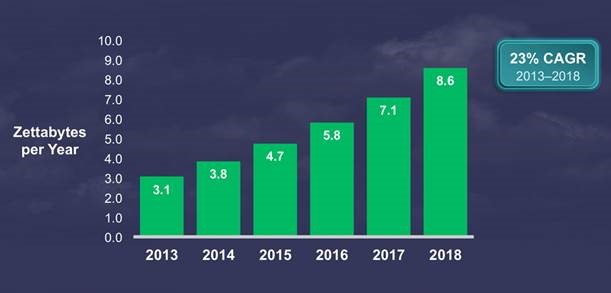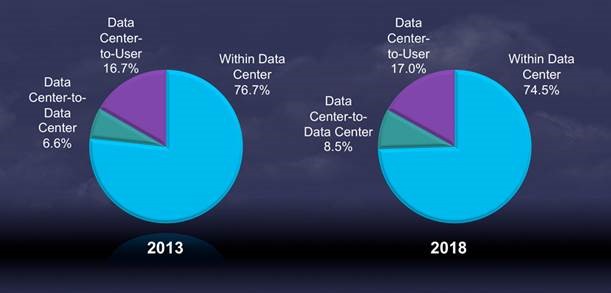On January 4 and 5, the Entertainment Storage Alliances held the 14th annual Storage Visions conference in Las Vegas, highlighting advances in storage technologies utilized in consumer electronics, the media and entertainment industries. The theme of Storage Visions 2015 was Storage with Intense Network Growth (SWING), which was very appropriate given the explosions going on in both data storage and networking.

While the primary focus of Storage Visions is storage technologies, this year’s theme acknowledges the corollary between storage growth and network growth. Therefore, among the many sessions offered on increased capacity and higher performance, the storage networking session was specifically designed to educate the audience on advances in network technology – “Speed is the Need: High Performance Data Center Fabrics to Speed Networking.”
More pressure is being put on the data center network from a variety sources, including continued growth in enterprise application transactions, new sources of data (aka, big data) and the growth in streaming video and emergence of 4K video. According to Cisco, global IP data center traffic will grow 23% annually to 8.7 zettabytes by 2018. Three quarters of this traffic will be inter-data center, or traffic between servers (East-West) or between servers and storage (North-South). Given this, data centers need to factor in technologies designed to optimize data center traffic.

Global Data Center IP Traffic Forecast, Cisco Global Cloud Index, 2013-2018

Global Data Center Traffic By Destination, Cisco Global Cloud Index, 2013-2018
Storage administrators have always placed emphasis on two important metrics, I/O operations per second (IOPS) and throughput, to measure the ability of the network to server storage devices. Lately, a third metric, latency, has become equally important. When balanced with the IOPS and throughput, low latency technologies can bring dramatic benefits to storage.
At this year’s Storage Visions conference, I was asked to sit on a panel discussing the benefits of Remote Direct Memory Access (RDMA) for storage traffic. I specifically called out the benefits of RDMA over Converged Ethernet (RoCE). Joining me on the panel were representatives from Mellanox, speaking about InfiniBand, and Chelsio, speaking about iWARP. The storage-focused audience showed real interest in the topic and asked a number of insightful questions about RDMA benefits for their storage implementations.
RoCE in particular will bring specific benefits to data center storage environments. As the purest implementation of the InfiniBand specification in the Ethernet environment, it has the ability to provide the lowest latency for storage. In addition, it capitalizes on the converged Ethernet standards defined in the IEEE 802.1 standards for Ethernet, include Congestion Management, Enhanced Transmission Selection and Priority Flow Control, which collectively allow for lossless transmission, bandwidth allocation and quality of service. With the introduction of RoCEv2 in September 2014, the technology moves from support for a (flat) Layer 2 network to become a routable protocol supporting Layer 3 networks, allowing for use in distributed storage environments.
Ultimately, what customers need for optimal Ethernet-based storage is technology which will balance between IOPS, throughput, and latency while allowing for flexible storage placement in their network. RoCE addresses all of these needs and is becoming widely available in popular server and storage offerings.

